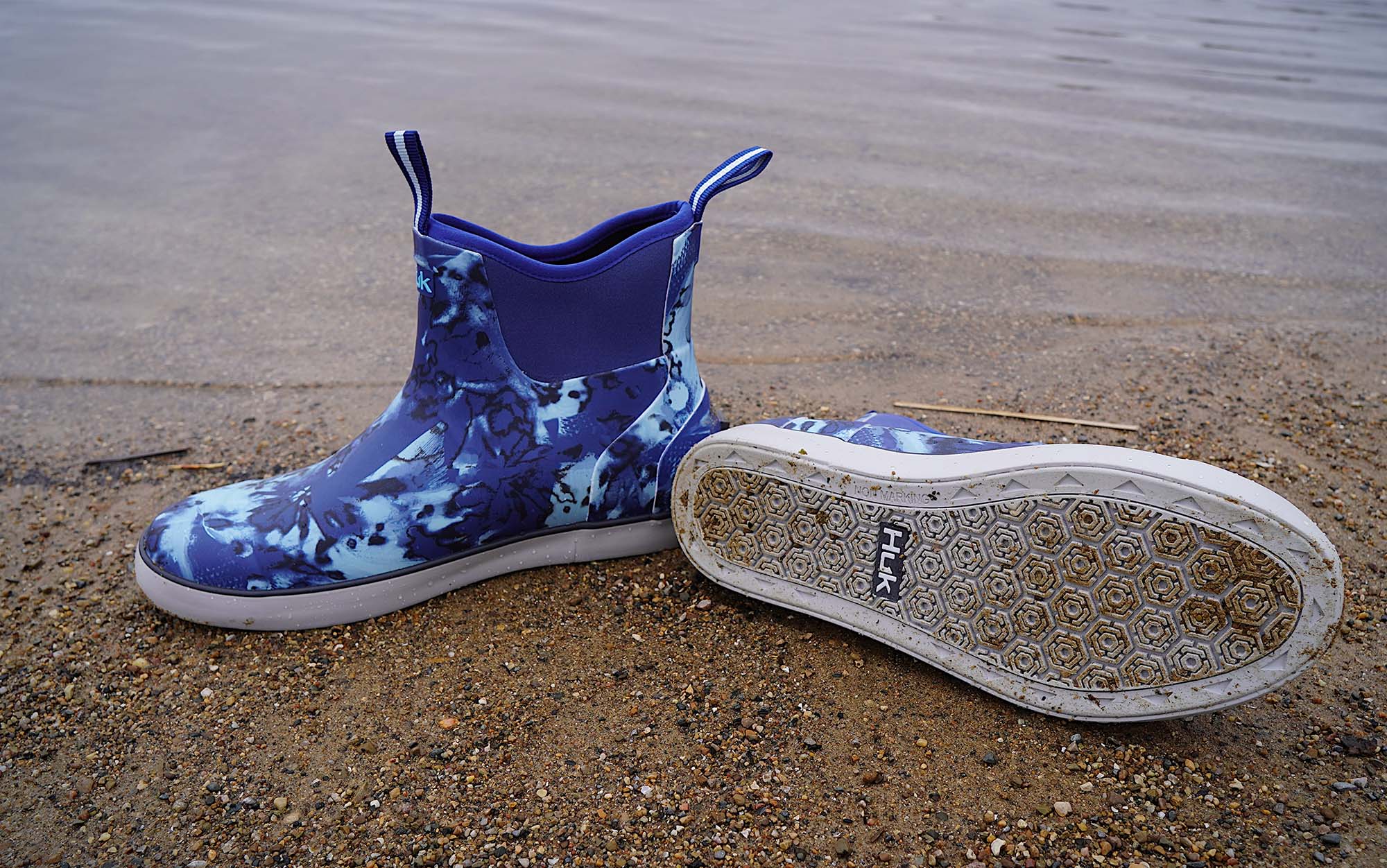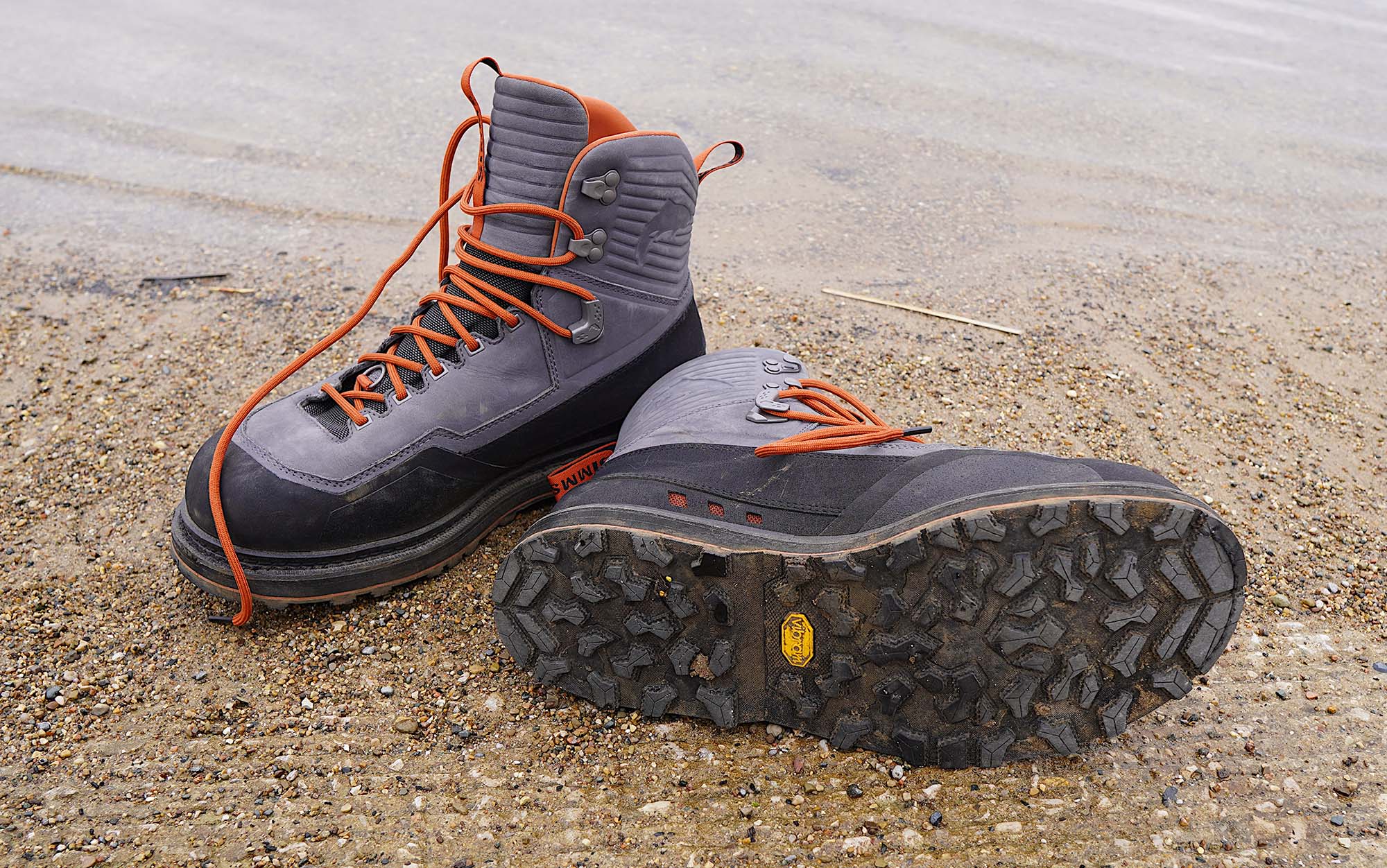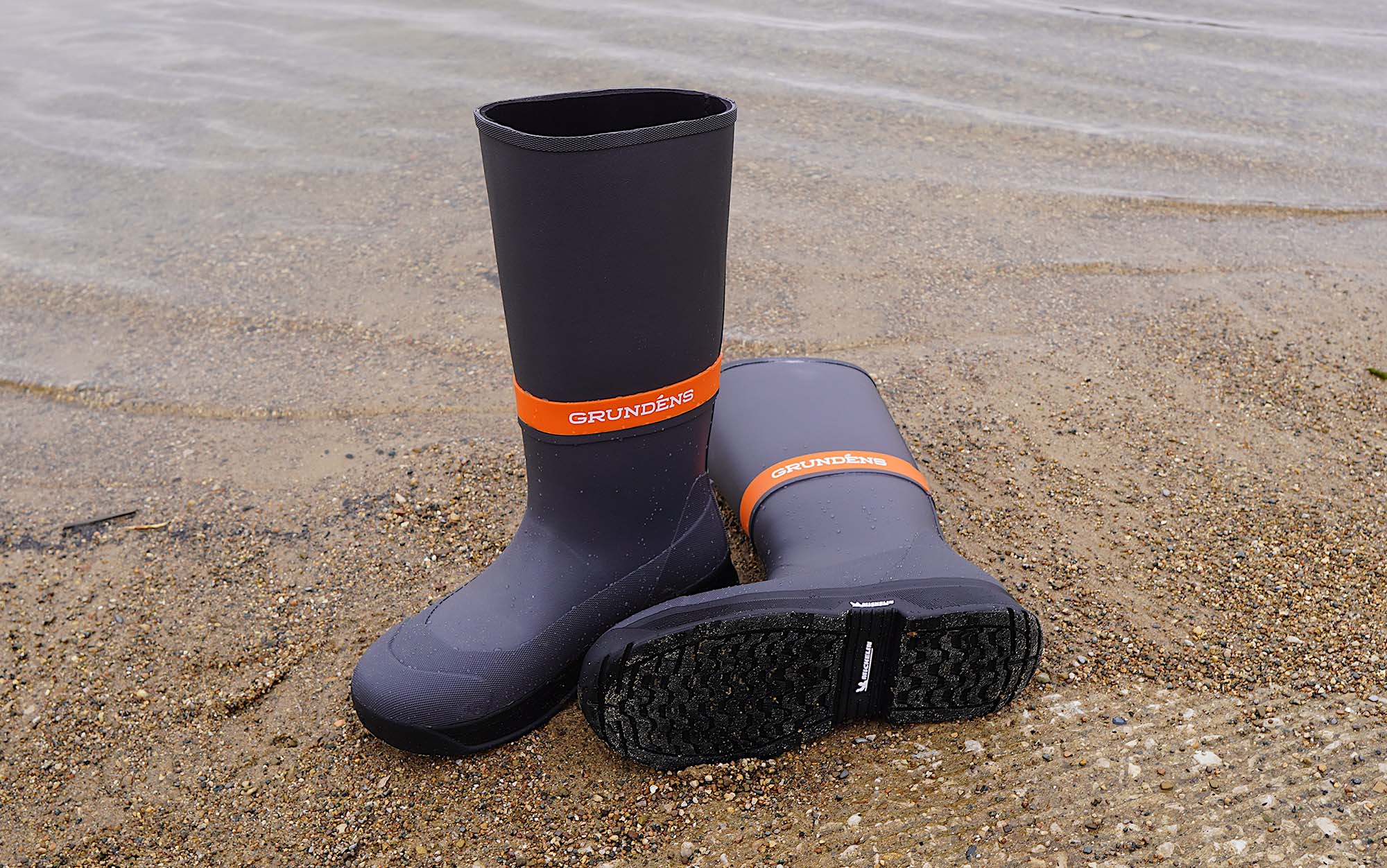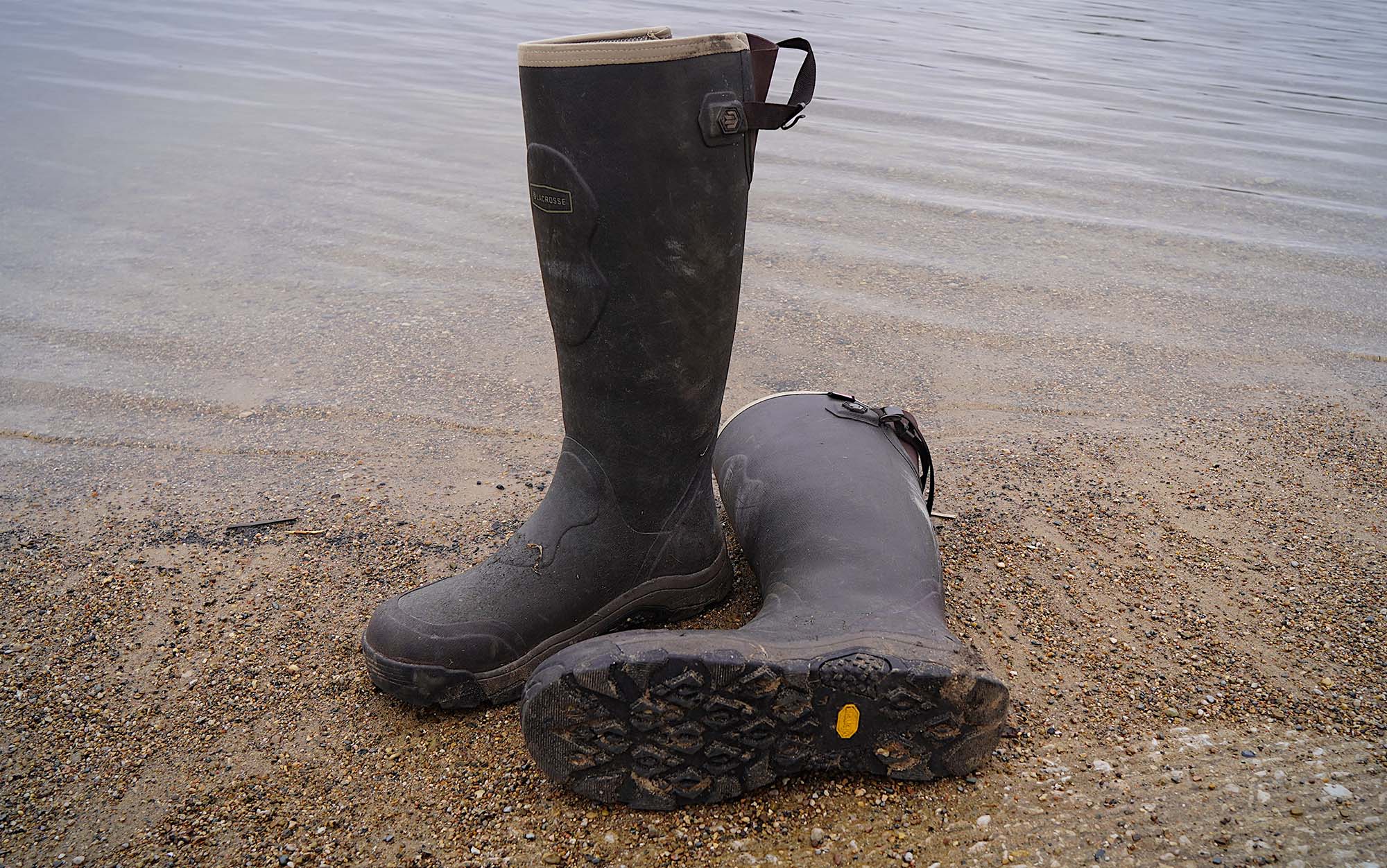We may earn revenue from the products available on this page and participate in affiliate programs. Learn More ›
Whether you’re walking the bank or running through chop at 40 mph, the right fishing boots go a long way toward comfort. They will also keep feet dry during tricky loading and unloading procedures at the launch ramp.
However, there are so many forms of fishing that it’s hard to pick just one boot for every style. Backcountry fly anglers need something different from a standard rubber deck boot. Riverbank anglers targeting catfish or gar will need something different than the fly angler. With that in mind, I tested several different styles of the best fishing boots. There is something here for nearly every style of angling.
How I Chose the Best Fishing Boots
Fishing boots are mainly designed to keep an angler’s feet dry. Thus, I focused primarily on testing each boot’s waterproof quality. This was quite simple to test: Find a body of water and start walking. However, I didn’t want that to be my only evaluation criteria. Most of these boots weren’t designed for excessive walking, but I put plenty of miles on each pair to test both the comfort and the durability. I noted any places where the boots pinched or felt tight.
Because anglers often walk on slippery decks or rocks, I also evaluated the treads of each boot. More specifically, I walked on as many types of surfaces as possible. I noted if one pair did better on a dock or slippery rock. I took some of these boots on surfaces they were never meant to tread, just to see what would happen. I was also looking for versatility because these boots can be expensive. Knowing when a boot can be used for multiple fishing styles is a nice bonus.
Finally, I evaluated each boot on fit and comfort. Not every manufacturer makes boots true to size or communicates when sizing up is appropriate. I identify where this was the case because it’s much more convenient to get sizing right the first time.
Best Fishing Boots: Reviews & Recommendations
Best Deck Boot: Salt Life Aquatic Journey Fade Deck Boot
Key Features
- Material: Rubber with neoprene trim
- Outsole: Non-marking, Anti-slip rubber
- Insole: Molded footbed
- Men’s Sizes: 6 to 13
Pros
- True to size
- Extremely comfortable
- Great tread that doesn’t slip
Cons
These deck boots fit perfectly out of the box and were extremely comfortable during my three-mile walking test thanks to their good arch support.
The Salt Life Aquatic Journey Fade Deck Boot’s design is nothing fancy. There are no unnecessary seams or materials that can interfere with pure performance. My feet stayed cozy and dry for long periods wearing these boots. Additionally, the simple design makes for easy clean-up and care at the end of the day. These are technically saltwater boots, but I see no reason freshwater anglers cannot utilize them.
The outsoles of the Fade Deck boots do a great job of gripping boat decks and docks. However, these boots don’t transition well to trails of mud or dirt. They are strictly deck or dock shoes.
Read Next: Best Boat Shoes
Best Value: Huk Rogue Wave
Key Features
- Material: Neoprene and rubber
- Outsole: Grip-X Outsole
- Insole: 8mm Molded EVA footbed
- Men’s Sizes: 7 to 14
- Women’s Sizes: 5 to 11
Pros
- Great price point
- Lightweight
- Long pull-straps are handy
Cons
Huk’s Rogue Wave boots cost around $100, but I’ve seen them on sale for much less than that. It’s a great price point for such a sharp-looking deck boot. I love the Grip-X outsoles on these. They have a little more texture and grip than some of the other deck boots I tested. These boots were excellent on concrete, boat decks, and my Old Town kayak’s deck.
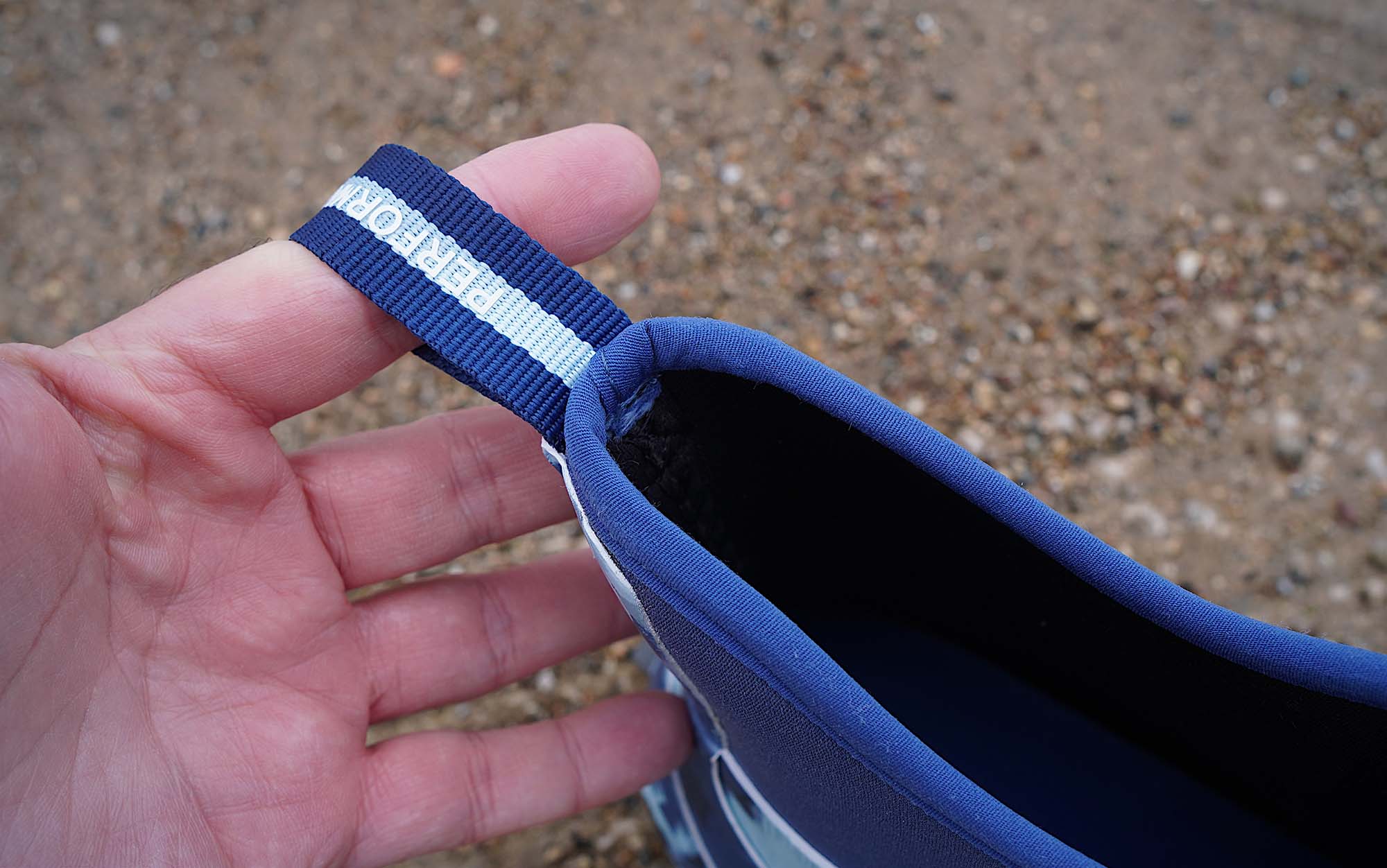
I also like how lightweight these boots are. I felt light on my feet each time I wore them, and that made them very comfortable during my extended walking test. Additionally, the pull straps on these boots are longer than the other models I tested, making it much easier to slip them onto my feet.
My one complaint is that these boots aren’t exactly true to size. I wish I had gotten one size up from my usual size 11. It’s not that the boots are uncomfortable, but they are noticeably tighter along the sides of the foot. Based on some of the reviews I’ve read, I wasn’t alone in this experience. Although, if you know that going in, it’s not a huge deal.
Best Wading Boot: Simms G3 Guide Wading Boots
Key Features
- Material: Textile mesh, synthetic, and natural rubber
- Outsole: Vibram Idogrip
- Insole: N/A
- Men’s Sizes: 7 to 16
- Compatible with cleats
Pros
- Great ankle support
- No break-in
- Extremely durable
Cons
I was blown away by how comfortable the G3 Guide boots were straight out of the box. It’s not often a boot this rugged with this kind of ankle support has no break-in period. I’ve even used them for hiking a few times because they are so comfortable. These boots are ideal for anglers who do a lot of walking to their favorite spots. They transition perfectly from the trail to wading with no issues. I was surprised at how dry my feet stayed while wading with a laced boot.
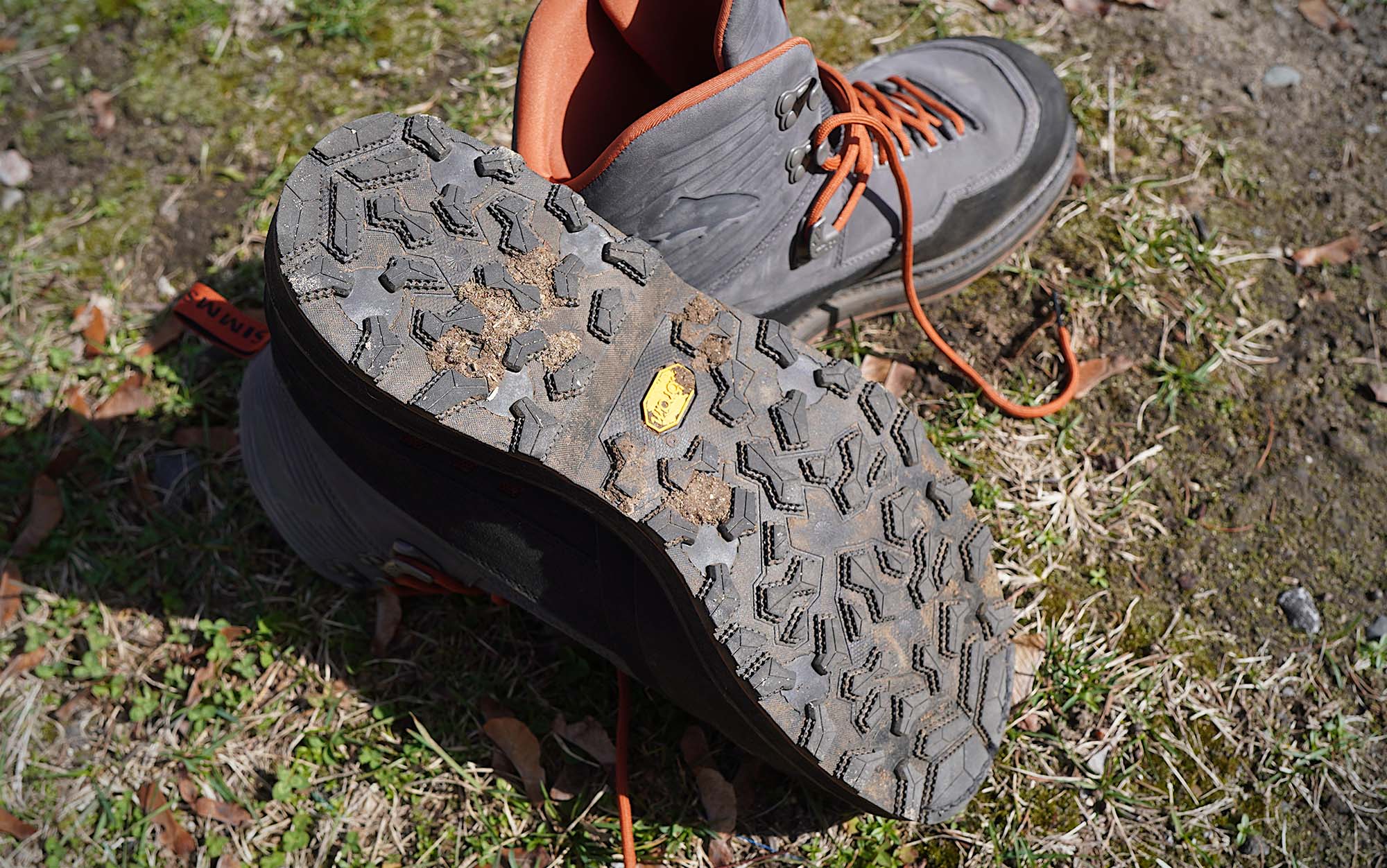
The only negative aspect of these boots is that they are slightly heavy. However, I think the trade-off is worth it due to the quality of the overall build. Simms also has a great warranty. They offer re-soling which should help extend the life of the boots. I like seeing anything that could save me money and produce less waste. Speaking of the sole, I love that Simms went with Vibram Idrogrip outsoles here. These soles will be safe for rivers with restrictions, but they also offer incredible grip. I tested these soles on wet concrete, decks, dirt, grass, and even some rather slippery mud. It was more than up for every task I gave it.
Read Next: Best Wading Boots
Best for Extreme Conditions: Grundens Crewman Tall Boot
Key Features
- Material: Neoprene
- Outsole: Michelin backed lug and rubber
- Insole: PU Midsole
- Men’s Sizes: 8 to 14
Pros
- Surprisingly light
- Extremely comfortable
- Grippy outsole
Cons
The Crewman tall boot is also perfect for long days far offshore on recreational fishing trips. The outsoles grip slippery surfaces exceptionally well. I’ve tested a lot of rubber boots over the years for both fishing and hunting. Amazingly, the Crewman is the most comfortable rubber knee boot I’ve ever worn. These boots are also surprisingly light. I walked three miles in them effortlessly. That’s not something I can say of every rubber boot out there. While these obviously weren’t designed for that kind of walking, it’s nice to know how capable they are.

During my waterproof tests, the Crewman worked like a charm. Not a drop ever got through to my socks. These boots are expensive, but I’m not surprised given the quality of the materials, especially the outsole. The Crewmans are some seriously robust boots for extreme conditions. These boots are the ideal option when fishing 40 or 50 miles offshore in rolling 10-foot or higher swells.
Read Next: Best Rubber Boots
Best for Bank Fishing: LaCrosse Alpha Evolution
Key Features
- Material: Rubber
- Outsole: Vibram XS Trek
- Insole: Polyurethane EVA Midsole
- Men’s Sizes: 6 to 15
- Women’s Sizes: 5 to 11
- Made in USA
Pros
- Excellent traction in mud
- Versatile beyond fishing
- Excellent comfort
Cons
I know, technically, these are hunting boots. However, after wearing them last deer season, I realized they were versatile beyond the woods. LaCrosse has given these boots an excellent Vibram XS Trek outsole. I continually find myself reaching for this pair whenever I know there will be slippery mud. These are my choices for riverbank fishing, especially while targeting large gar or catfish. The 17-inch height allowed some wading into the shallows and protected my pants from mud splash. I own several pairs of rubber boots like this, but the Alpha Evolution has the best footbed by far. It’s cushy enough to hike in if needed.
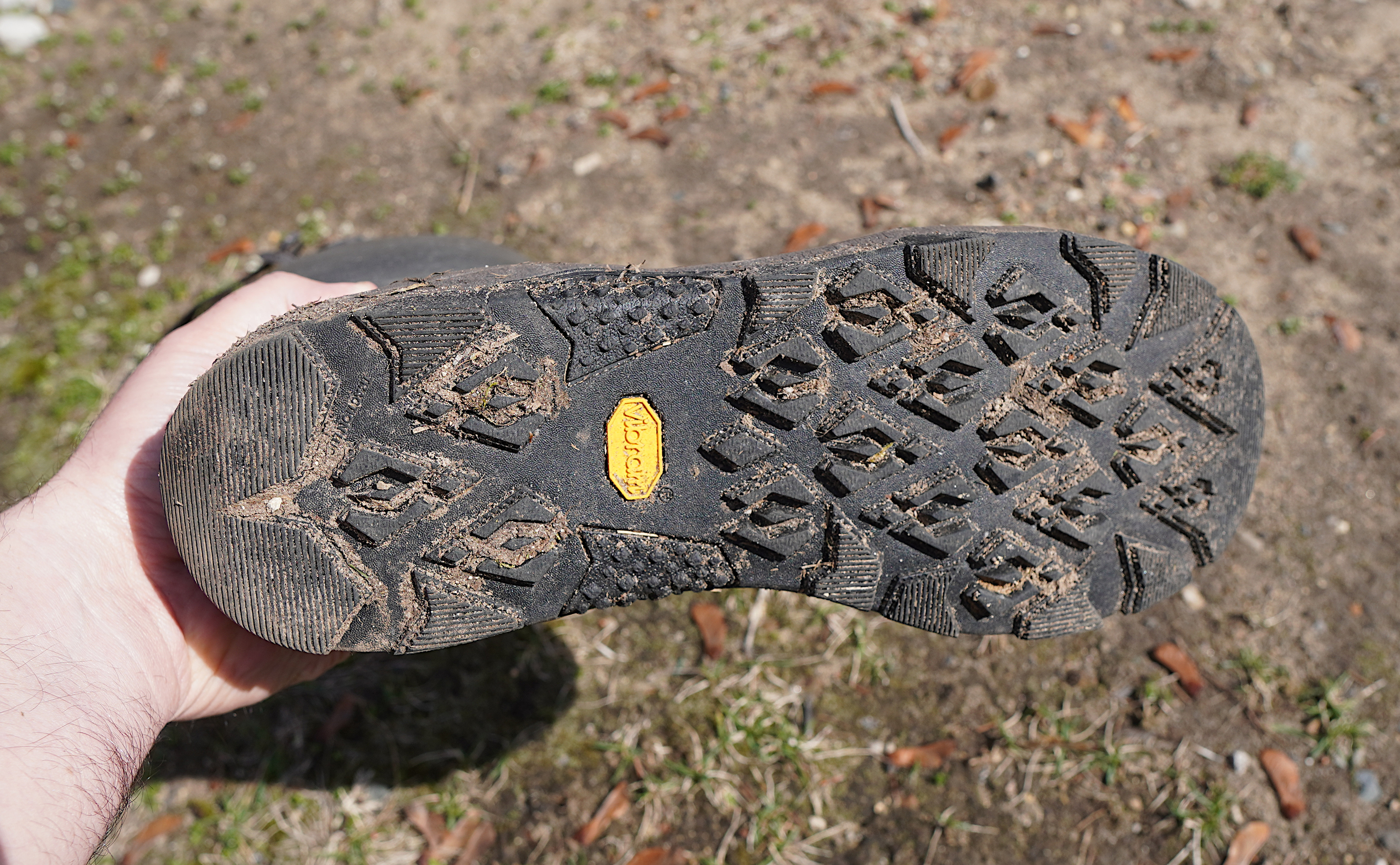
Anglers looking for more value for their money will like the versatility here. These boots are also great for deer and duck hunting, trail camera checks, food plot work, and more. The pair I have is uninsulated, which can limit their use in colder weather. My solution was to pair these boots with merino or alpaca wool socks. I also removed the insoles a few times and replaced them with battery-heated ones. I wore these boots in temperatures down to 25 degrees a few times with the added heating element.
How to Choose Fishing Boots
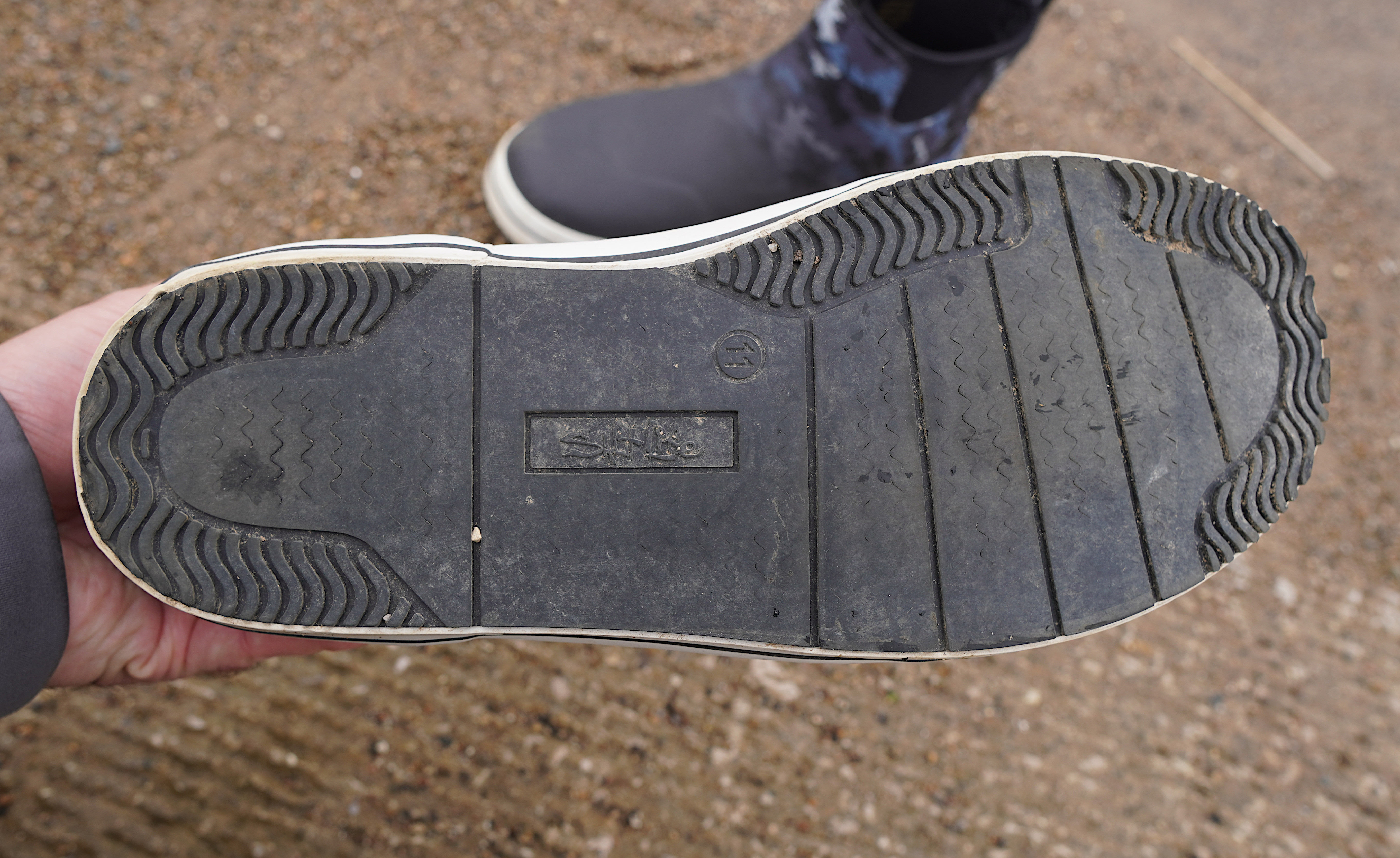
Outsole
I like to think of boot soles like vehicle tires. One wouldn’t drive a vehicle with slick tires up a mountain, or knobby mud tires on pavement. Likewise, using mud treads on a slick deck doesn’t make sense. Thus, it’s essential to think about the type of fishing where the boots will be utilized the most. I like Vibram outsoles built for mud on most bank fishing applications. For deck boots, I like the simple flat outsole like the one on the Salt Life boots.
Insoles
Anglers spend a lot of time on their feet, which means a comfy insole is a must, especially on a boat where the water is choppy. The correct insole will help you keep your balance and stay comfortable. Trying on your new boots before the first fishing trip is vital. Nothing ruins an all-day fishing trip quite like discovering the insoles aren’t comfortable on your feet.
A boot’s stock insoles are not a dealbreaker, though. There are tons of custom sole inserts available today. It’s relatively easy to customize the fit on just about any pair of boots in this manner. Sometimes, a different insert can turn a good pair of boots into a great one in minutes.
Use Case
Fishing boots have come a long way in terms of comfort and versatility in the last few years. Most have a specific case-use scenario in mind. I own multiple pairs of fishing boots simply because I enjoy a variety of angling styles. If I’m flying somewhere for a fishing trip, the shorter deck boots are much easier to pack. That style is also my choice for fishing from standard bass and walleye boats. When I’m fishing in my kayak, I prefer a taller knee boot style. Mainly because I can wade a little deeper with a tall knee boot for easier launching and unloading without scuffing the hull on the bottom. Anglers who are trailering a boat can usually get away with a shorter boot.
Anglers who plan to do a lot of hiking need to think about arch support. This becomes especially important for hikes to high-altitude streams and lakes. In my experience, you usually get what you pay for regarding hiking-style footwear. It’s one area where it’s worth investing in something specifically designed for that angling style. I’ve had too many negative experiences with cheaper boots that rub my ankles and feet raw.
In short, it’s worth thinking critically about the exact style of boot required for each type of angling. Anglers who spend all day on a pier have different needs than someone targeting alligator gar on a muddy riverbank.
FAQs
Socks are a must for any type of fishing boot. Doing otherwise will result in sweaty feet and potentially nasty blisters. Additionally, most types of fishing boots don’t offer much insulation, so a quality sock is essential for warmth. Socks made from merino wool are my top choice since they provide good insulation and moisture-wicking qualities.
Based on my experience while testing here, I would go up one size for HUK. The exception would be for anglers who want a snug fit. HUK was the only brand I tested that didn’t seem quite true to size during this test. That’s not a dealbreaker for the brand, but it is something to remember when buying HUK.
Felt soles are not illegal in all bodies of water. They gained popularity with wading fly anglers because they offer excellent traction on wet rocks. Unfortunately, many scientists and wildlife agencies have linked this style of boot with the spread of invasive species, specifically New Zealand mud snails, zebras, and quagga mussels. However, certain types of aquatic vegetation and zooplankton are also a concern. Subsequently, many states have outright banned the use of felt soles. Manufacturers still make felt soles, but anglers must study the regulations closely before buying a pair.
Final Thoughts on the Best Fishing Boots
When it comes to the best fishing boots, it’s hard to go wrong with any of these options. However, the Salt Life Aquatic Journey Fade deck boot is a real standout. This boot has a simple design that’s easy to keep clean. It’s also one of the most comfortable pieces of fishing footwear I’ve ever worn. Combine that with an excellent price point, and it’s a boot I see myself using for years to come.

